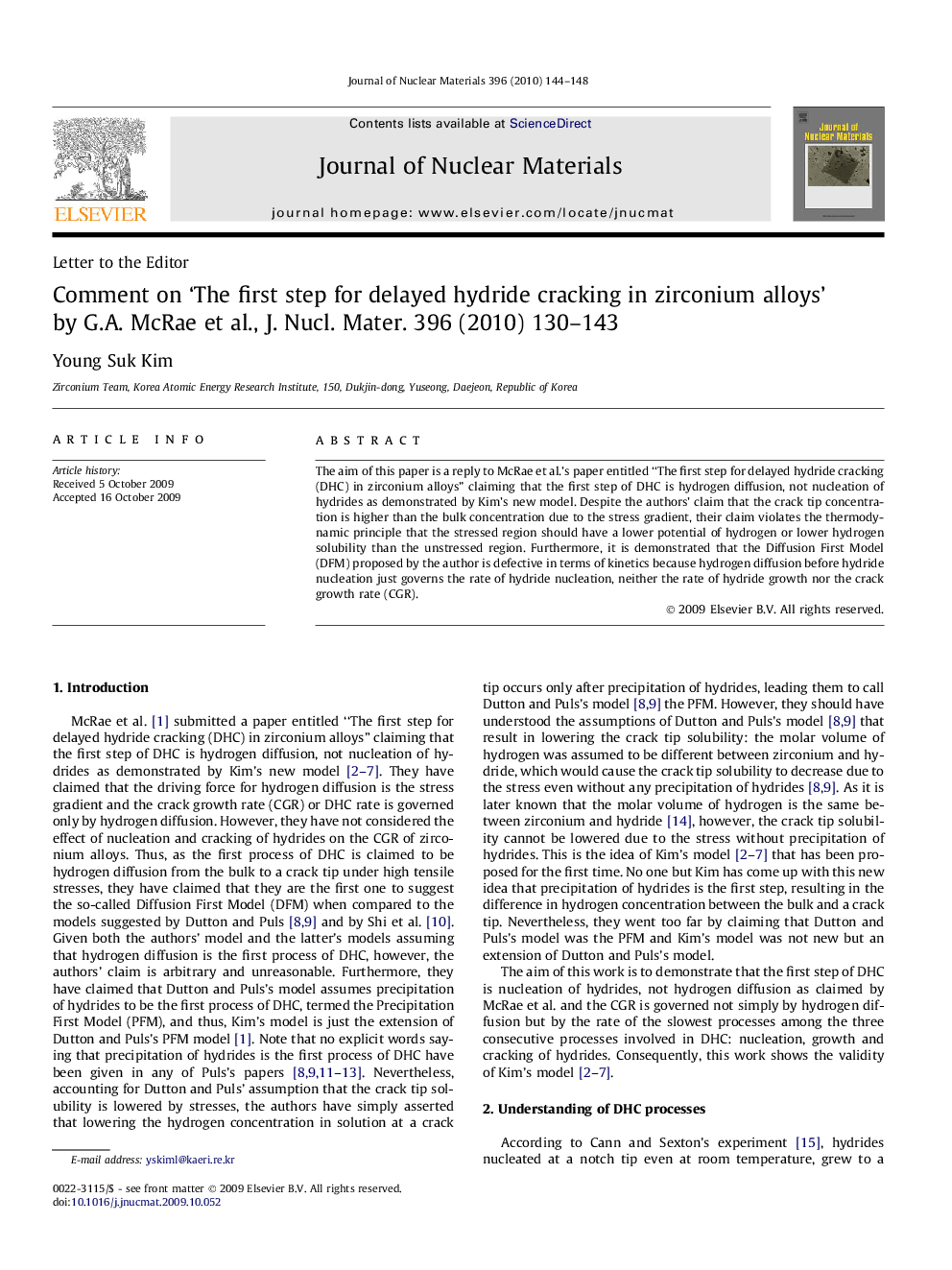| Article ID | Journal | Published Year | Pages | File Type |
|---|---|---|---|---|
| 1567446 | Journal of Nuclear Materials | 2010 | 5 Pages |
The aim of this paper is a reply to McRae et al.’s paper entitled “The first step for delayed hydride cracking (DHC) in zirconium alloys” claiming that the first step of DHC is hydrogen diffusion, not nucleation of hydrides as demonstrated by Kim’s new model. Despite the authors’ claim that the crack tip concentration is higher than the bulk concentration due to the stress gradient, their claim violates the thermodynamic principle that the stressed region should have a lower potential of hydrogen or lower hydrogen solubility than the unstressed region. Furthermore, it is demonstrated that the Diffusion First Model (DFM) proposed by the author is defective in terms of kinetics because hydrogen diffusion before hydride nucleation just governs the rate of hydride nucleation, neither the rate of hydride growth nor the crack growth rate (CGR).
